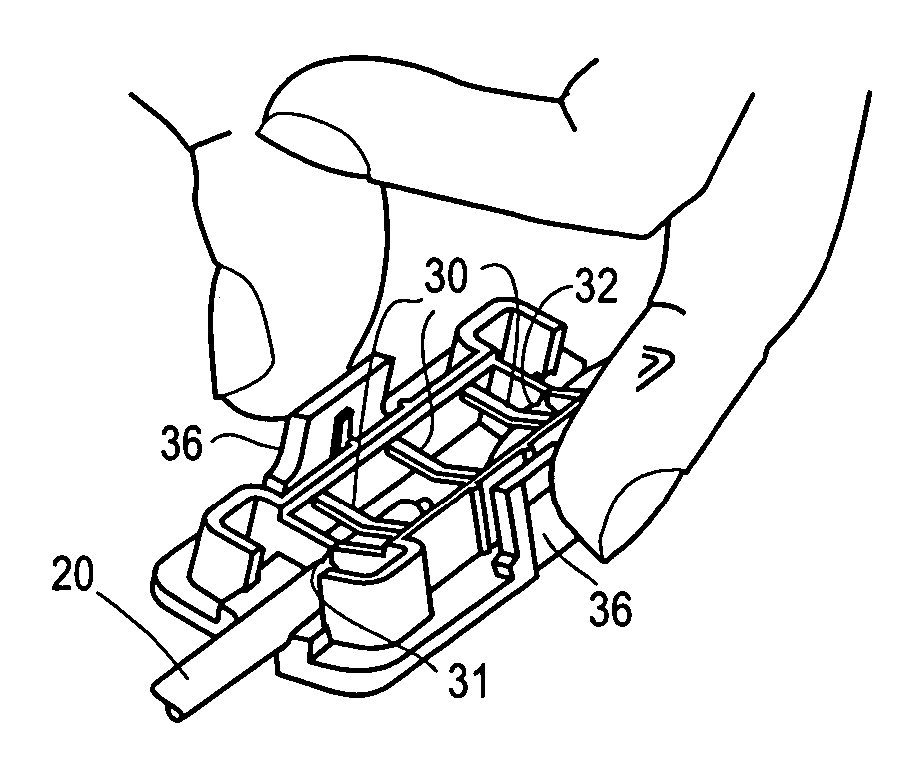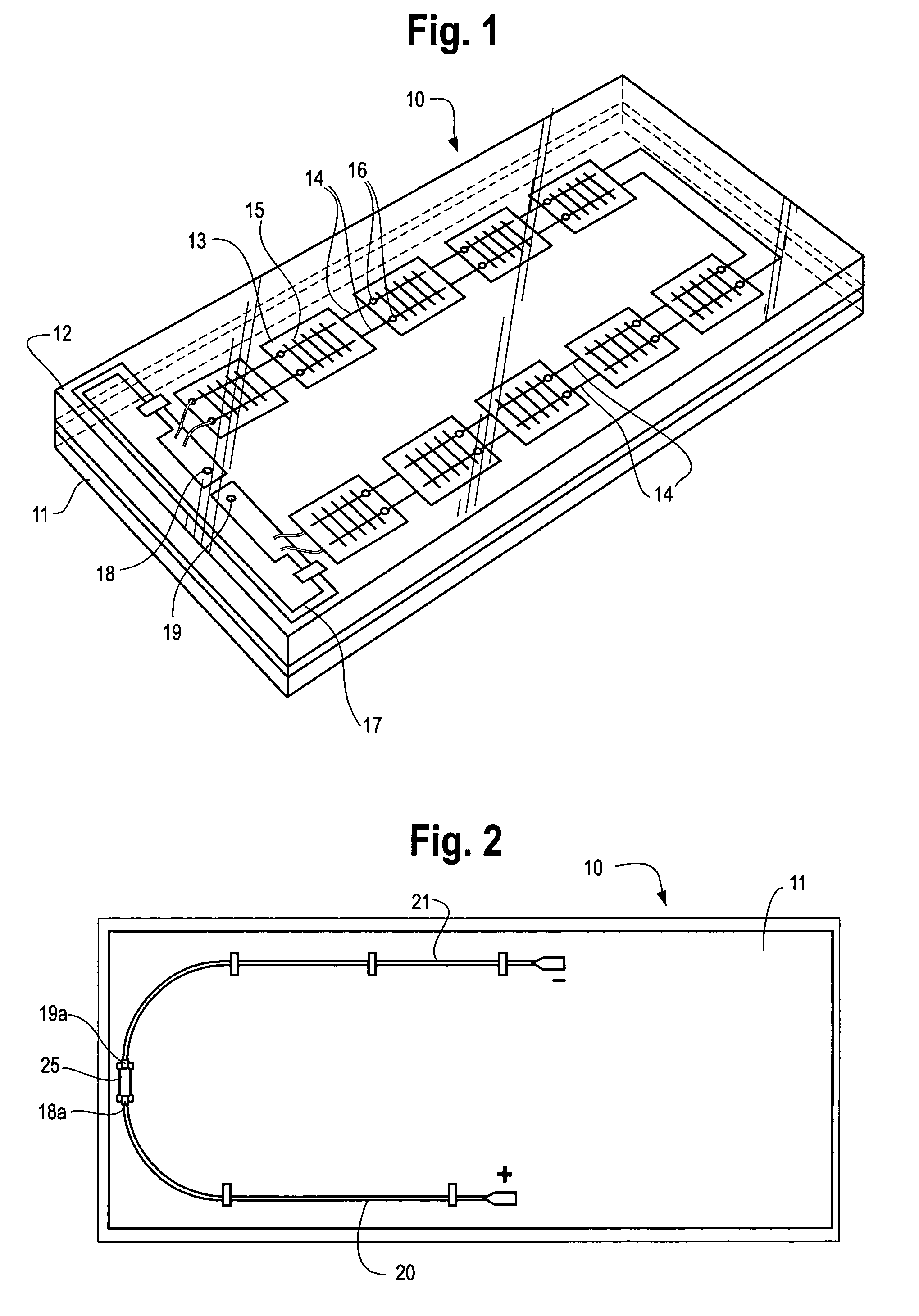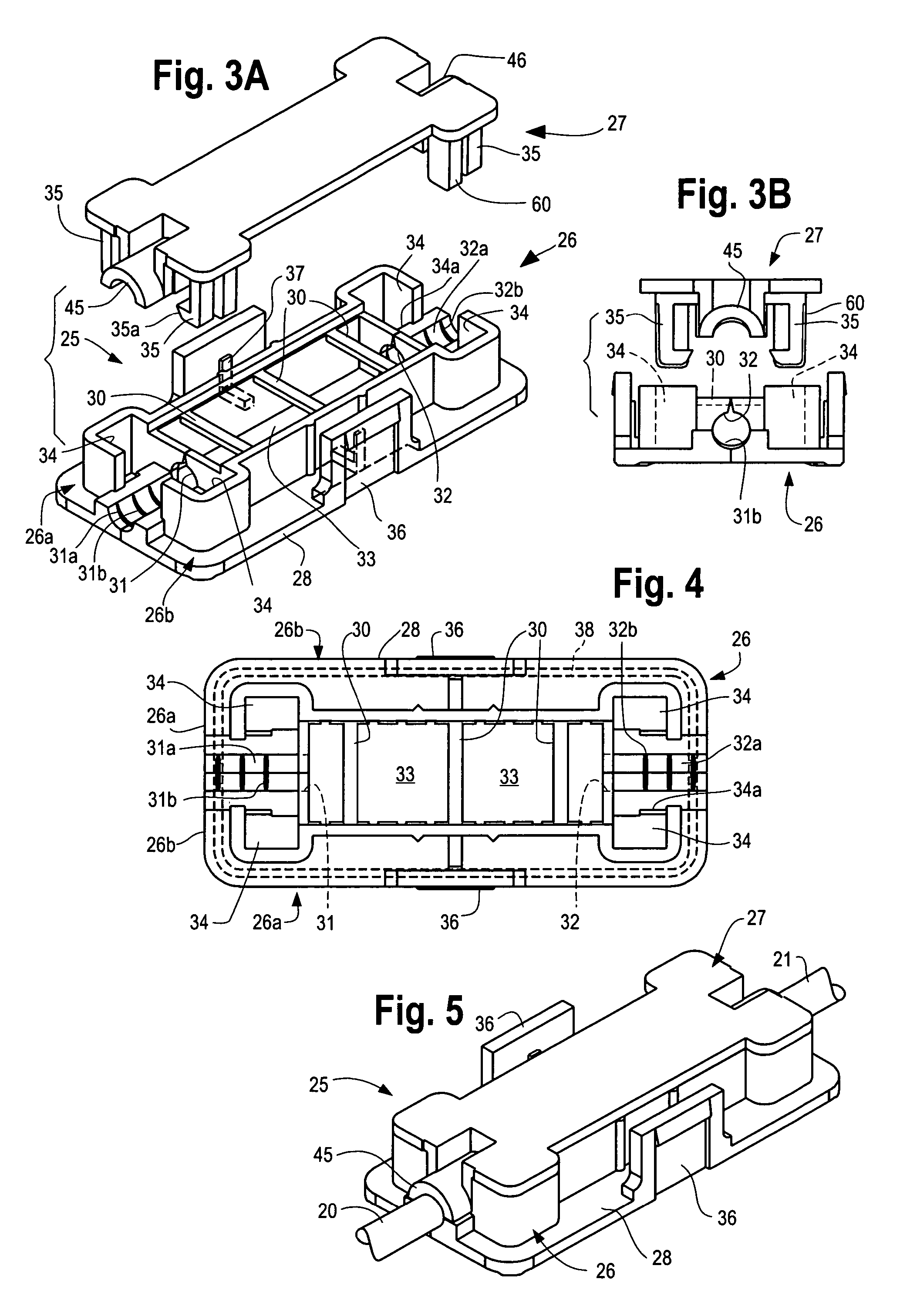Junction box for output wiring from solar module and method of installing same
a solar module and junction box technology, applied in the direction of electrical apparatus casings/cabinets/drawers, pv power plants, coupling device connections, etc., can solve the problems of inoperable modules, large prior art boxes with relatively large size, and large amounts of epoxy to cover the connections, etc., to improve the esthetics of finished products, reduce overall manufacturing costs, and facilitate installation
- Summary
- Abstract
- Description
- Claims
- Application Information
AI Technical Summary
Benefits of technology
Problems solved by technology
Method used
Image
Examples
Embodiment Construction
[0021]Referring now to drawings, FIG. 1 illustrates a typical photovoltaic module 10 in which the junction box of the present invention can be used. Module 10 is formed of a backing sheet 11 of any suitable material, e.g. a polymeric material, and a cover substrate 12, preferably comprised of glass or other suitable transparent material. Between substrate 12 and backing sheet 11 is sandwiched a plurality of photovoltaic cells (PV) 13 (only one numbered for clarity), electrically connected in series by wires 14. The PV cells may be of any type such as those made from multi-crystalline or mono-crystalline silicon wafers. As shown, each cell 13 has a grid-type, front electrical contact 15 (only one numbered for clarity)
[0022]Sunlight enters through substrate sheet 12 and impinges on the front side of the PV cells 13. The wires 14, which connect the cells 13 in series, are connected to a contact on the back side of the cells (not shown) and to the solder contact points 16 on the front s...
PUM
 Login to View More
Login to View More Abstract
Description
Claims
Application Information
 Login to View More
Login to View More - R&D
- Intellectual Property
- Life Sciences
- Materials
- Tech Scout
- Unparalleled Data Quality
- Higher Quality Content
- 60% Fewer Hallucinations
Browse by: Latest US Patents, China's latest patents, Technical Efficacy Thesaurus, Application Domain, Technology Topic, Popular Technical Reports.
© 2025 PatSnap. All rights reserved.Legal|Privacy policy|Modern Slavery Act Transparency Statement|Sitemap|About US| Contact US: help@patsnap.com



